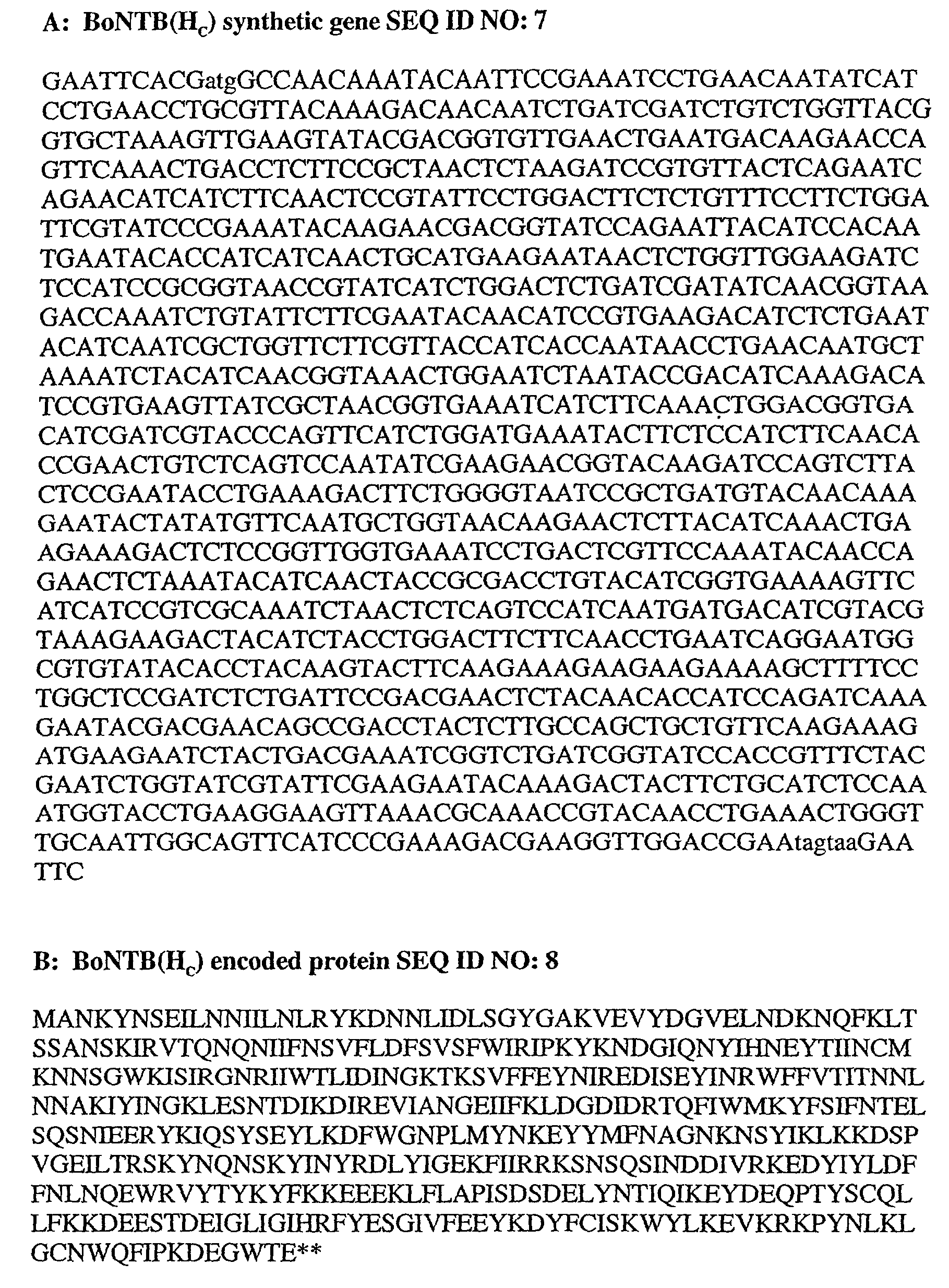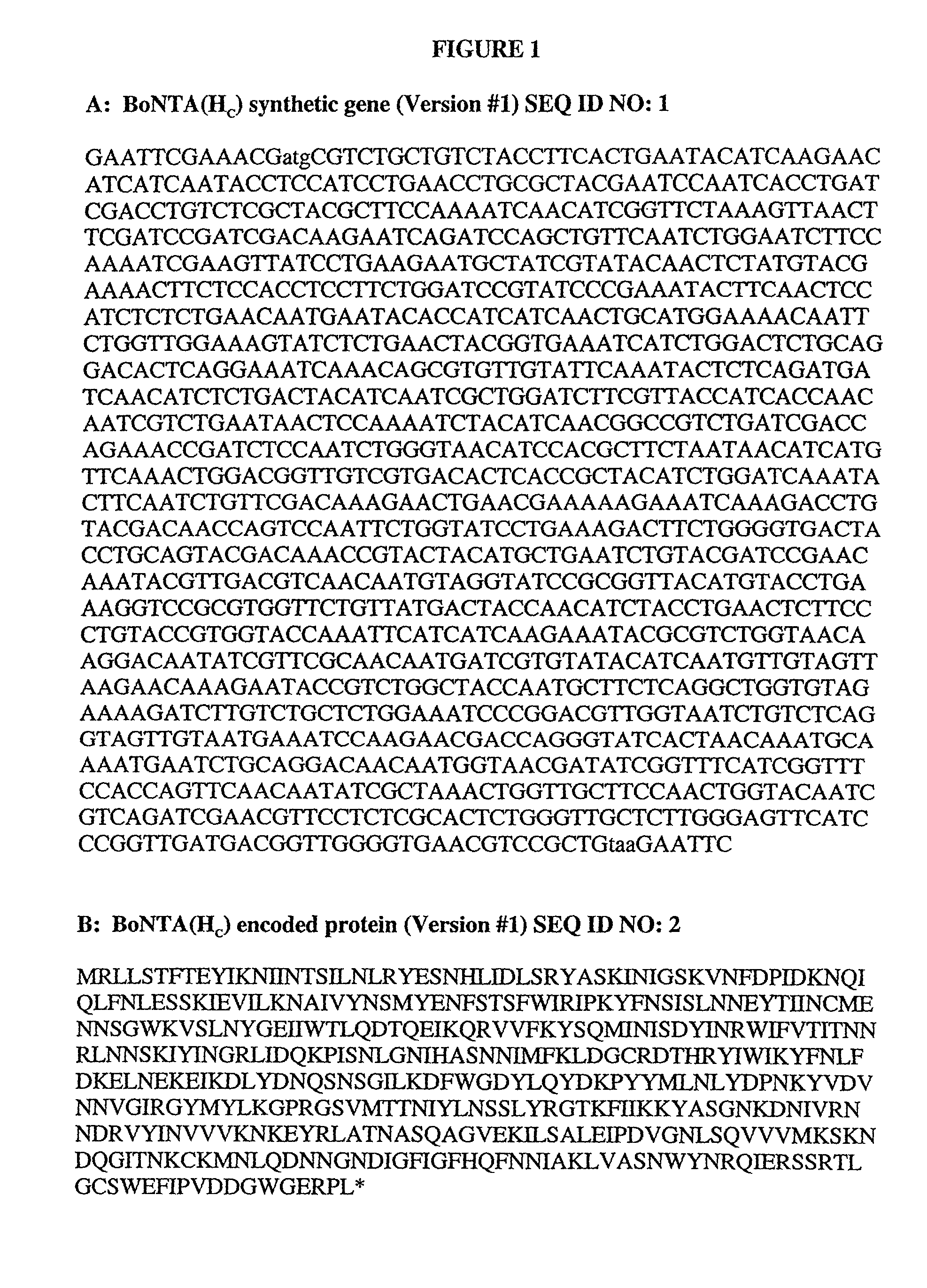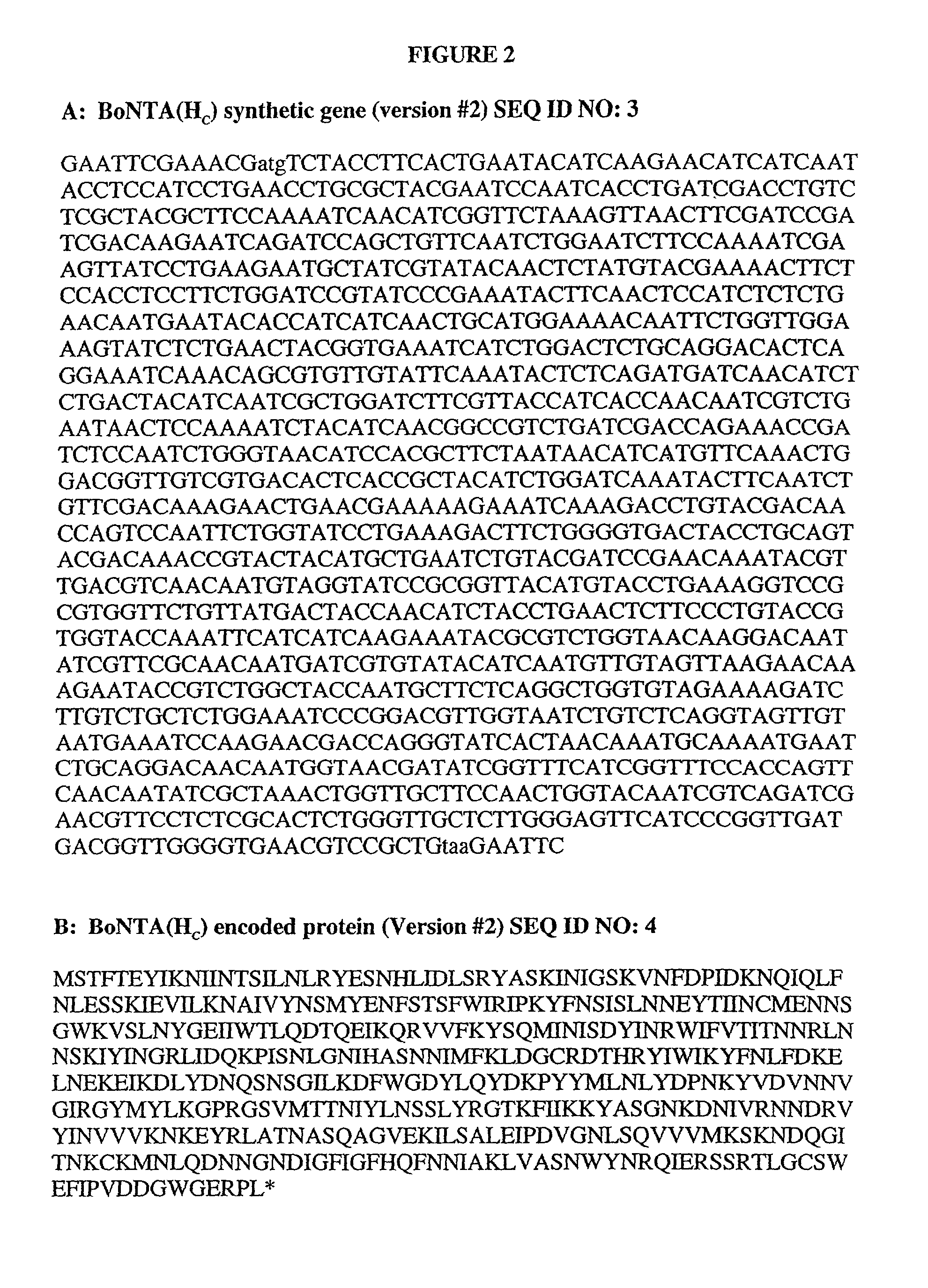Recombinant vaccine against botulinum neurotoxin
- Summary
- Abstract
- Description
- Claims
- Application Information
AI Technical Summary
Benefits of technology
Problems solved by technology
Method used
Image
Examples
example 1
Synthesis and Cloning of a Synthetic Gene Encoding rBoNTF(HC)
[0083]A synthetic gene encoding a putative fragment C region of botulinum neurotoxin serotype F was designed and constructed for expression in Escherichia coli (Holley et al., submitted to Vaccine). The recombinant BoNTF(HC)1, gene was expressed in E. coli as a fusion protein with maltose-binding protein (MBP) with yields of 1 mg / L culture (See FIG. 18).
[0084]The same gene was used for expression studies in the yeast, P. pastoris. This particular host was chosen because it could produce high levels of recombinant proteins (Cregg, J. M., et al., (1993), “Recent Advances in the Expression of Foreign Genes in Pichia pastoris,” Bio / Technology, 11:905–909; Romanos, M. A., et al., (1992), “Foreign Gene Expression in Yeast: A Review,” Yeast, 8:423488; Sreekrishna, K., et al., (1988), “High Level Expression of Heterologous Proteins in Methylotrophic Yeast Pichia pastoris,” J. Bas. Microbiol., 28:265–278) and because it lacked endo...
example 2
Synthesis and Cloning of a Synthetic Gene Encoding rBoNTF(HC)
[0087]A second synthetic gene, rBoNTF(HC)2, was subsequently designed to facilitate expression in P. pastoris. Redesigning the gene was intended to lower specific regions of the rBoNTF(HC)1 gene in which spikes of AT-rich tracts still remained. Previous work had shown that rare codons (Makoff, A. J., et al., (1989), “Expression of Tetanus Toxin Fragment C in E. coli: High Level Expression by Removing Rare Condons,”Nucleic Acids Res., 17:10191–10201) and / or highly enriched AT base compositions (Romanos, M. A., et al., (1991), “Expression of Tetanus Toxin Fragment C in Yeast: Gene Synthesis is Required to Eliminate Fortuitous Polyadenylation Sites in AT-rich DNA,”Nucleic Acids Res., 19:1461–1467) in clostridial DNA were incompatible with optimum expression of clostridial genes in E. coli and yeast. A second synthetic gene encoding the rBoNTF(HC) fragment was designed and constructed using P. pastoris codon usage (Sreekrishna...
example 3
Expression and Cell Disruption of rBoNTF(HC) in P. pastoris
[0088]Large-scale fermentation conditions and optimal intracellular expression of rBoNTF(HC) were determined for the yeast strain P. pastoris.
[0089]Protein Expression
[0090]A stock seed culture of P. pastoris was grown in shake-flasks containing 0.5 L of YNB medium (13.4 g / L yeast nitrogen base without amino acids, 20 g / L glycerol, 0.4 mg / L biotin, in 100 mM sodium phosphate, pH 6.0). Cultures were grown at 30° C. until an A600 of 20 absorbance units was achieved, and then used to inoculate a 5-L BioFlo 3000 fermentor (New Brunswick Scientific, Edison, N.J., U.S.A.) containing 2.5 L basal-salt medium plus PTM4 trace mineral salts and 4% glycerol. Dissolved oxygen was maintained at 40% and the pH was maintained at 5.0 with 30% ammonium hydroxide. After the initial glycerol was consumed, 50% (w / v) glycerol was added at a rate of 20 g / L / h for 1 h then decreased linearly to 0 g / L / h over 3 h The medium was enriched with 1.5 g me...
PUM
| Property | Measurement | Unit |
|---|---|---|
| Fraction | aaaaa | aaaaa |
| Fraction | aaaaa | aaaaa |
| Fraction | aaaaa | aaaaa |
Abstract
Description
Claims
Application Information
 Login to View More
Login to View More - R&D
- Intellectual Property
- Life Sciences
- Materials
- Tech Scout
- Unparalleled Data Quality
- Higher Quality Content
- 60% Fewer Hallucinations
Browse by: Latest US Patents, China's latest patents, Technical Efficacy Thesaurus, Application Domain, Technology Topic, Popular Technical Reports.
© 2025 PatSnap. All rights reserved.Legal|Privacy policy|Modern Slavery Act Transparency Statement|Sitemap|About US| Contact US: help@patsnap.com



